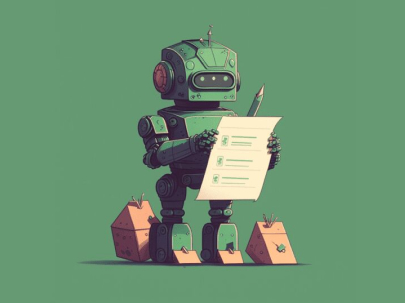Improving CX with AI has been the hot topic for support leaders over the last few months. It seems everyone is finding new and exciting ways to use AI to improve customer experience. However, building an AI strategy for CX needs careful consideration. As with most emerging technologies, there is a lot of hype and your strategy needs to cut through that to find the right solution to meet your needs. To build a robust AI strategy for CX you require:
- A dataset that is robust and representative of your business, products descriptions and usage, support tickets, and any key components of your customer journey
- Clear problem statement for what you want the AI solution to achieve
- Willingness to experiment with the results
While all of these will evolve over time, a complete strategy requires pre-planning in each of these areas.
Data
Every initiative to use AI for customer experience starts with data. If you want to enable AI automation for customer experience use cases, you have to have the data to train the model and keep it up-to-date. AI training comes in many different forms. The goal is to teach the model as much about your lexicon, ticket types, brand voice, etc. as possible. The first part of any strategy is to ensure you have access to the necessary data.
Knowledge
One way to train your AI is for it to ingest knowledge about your company, products and customers. Examples are: help articles, historical ticket data, training documentation, company “about” pages, product descriptions, surveys, CRM data, social media interactions, product reviews, etc. Data quality is just as important as quantity, so ensure what you use for training reflects real customer interactions.
Customer experience optimization requires you to break down data silos, bringing relevant information together, and creating a comprehensive view of your customers and knowledge.
Maintenance
Ongoing data collection and maintenance has to be part of your AI-powered CX strategy. Your AI model needs to keep pace. Customer language, concerns, product features, services, industries, etc.all evolve over time. As well, existing responses might not be quite right. How will you review and fix these errors? Look for ways to continuously feed fresh conversational data into your models and to correctly train the model when it makes a mistake. This will prevent AI responses from becoming incorrect or irrelevant.
Clear Use Cases
An AI strategy for CX must include the touchpoints in your customer journey where AI can add value and pick the specific use cases to target. The AI tech landscape is vast, with a lot of overlap in tool features or features that sound the same, but work in very different ways. Your strategy should begin with targeted solutions to specific pain points. This will help you prove value, which can lead to expanded use cases as you see the benefits. There are several use cases across the customer journey and you should build your AI strategy for CX around the ones most relevant to you.
Personalization
A common use case for marketing and sales is to analyze how customers interact across the customer journey to uncover pain points. For example, at what stage do you lose prospects and leads? Or is customer success/account management speaking to the right sets of users? These can be derived through AI to personalize experiences.
Customer Data Platforms consolidate data from various sources to create unified customer profiles. Combining data from your entire tech stack to understand very precise personalizations that can be made is one of the most impactful use cases. With the right tools, you can use AI to improve customer experience without them ever explicitly telling you what they want.
Agent Assist
Agent Assist tools take many forms. Some tools focus on the generative aspects of newer LLM models such as ChatGPT, and others focus on giving more context to the agents by connecting data together to allow agents to have more informed conversations.
With these tools, it is very important to understand where your agents need assistance. For example, is the problem that time is wasted searching in other tools for information like order numbers, products, delivery IDs? Or is the problem that agents are struggling with finding the appropriate knowledge to create a meaningful response to a customer? These are just two examples of use cases which require different tools to solve. Which is why clarity is key when building an AI strategy for CX.
Insights
Often the problems you need to solve are unknown or unquantifiable. This means that you might waste money on projects that don’t resonate with your customers or which take up precious time from other initiatives. Improving CX with AI can take on many forms:
- Churn Prediction – Identify customers likely to cancel services using AI analysis of behavior over time. Specifically, what patterns of behaviour lead to churn? Are customers that open support tickets less likely to churn? Are there any commonalities between usage patterns and churn?
- Sentiment Analysis – AI can automatically detect emotion and sentiment in customer conversations to gauge satisfaction. This is especially helpful when you want to compare your performance against sentiment. For example, If your performance metric indicates an improvement, but sentiment has turned negative, you might be setting the wrong goals.
- Fraud Detection – Machine learning helps identify patterns in data that suggest fraudulent activity, protecting customers and your liability.
The solutions to your use cases will determine the tool or set of tools you need to execute your AI strategy in CX. Bringing precise details to research and vendor demos will result in a better outcome for your business.
Integration and Creativity
No matter what use cases for customer experience optimization you choose, part of your strategy must be how you intend to iterate and experiment to maximize the return on investment. Doing this takes creativity.
The power of AI is not in using it to generate a static dashboard of trends, it is in its ability to find the trends you aren’t looking for.
It’s vital that you provide training to employees so they can effectively leverage AI to improve customer experience. The more creative your team can be with how they look at the analytics generated or the customer outcomes, the better your CX program will be. It’s essential to integrate it seamlessly into your existing systems and processes so that it becomes part of the role to watch for, correct, and evolve in a customer-driven way.
For agent assist or ticket deflection use cases, this might mean finding inefficient workflows to automate or identifying new ticket types or customer concerns to resolve. With insight use cases look for correlations that pop out from the aggregated data that you can use to improve your product or personalizations. If you want to sell to a new market, find out what the data shows the market is saying about you. Planning ahead for customer experience optimization is not easy. But understanding the relevant data sets and applying some creativity is a sure way to create an AI-powered CX strategy.
AI-powered CX strategy
Like any large project, there are critical elements that need to be planned when wanting to use AI to improve customer experience. Unlike other software categories, like telephony and CRMs where the feature sets are similar, AI is incredibly diverse. Tools do multiple tasks, in a variety of ways. You cannot simply “buy AI.” Having a robust AI strategy for customer experience will give you higher quality results and an opportunity to constantly improve.



